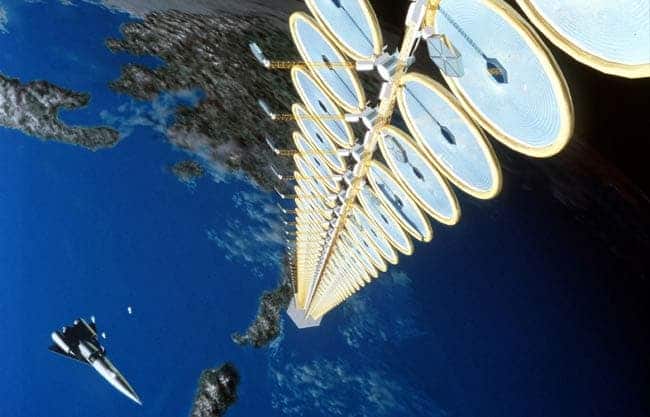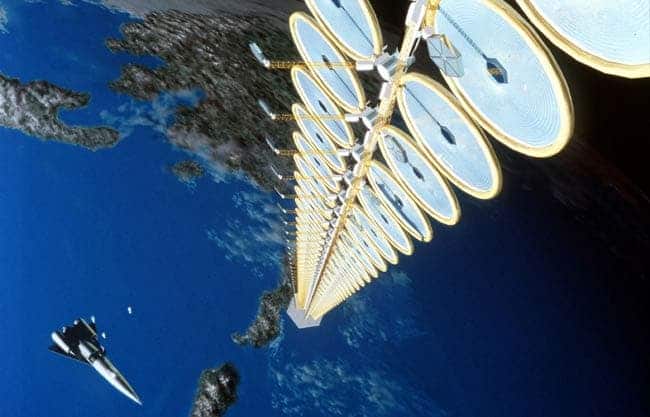Last week, the U.S. Air Force released a report in which it outlines its technological and energy plans for the forthcoming 15 years. Among others, the Air Force means to deploy a space-based solar power station, which would serve energy wirelessly to both Earth and space satellites, as well as a new generation of spacecraft powered by small nuclear reactors.

The 72-page long report, titled “Energy Horizons: United States Air Force Energy S&T Vision 2011-2026”, can be read in its entirety for thus curious enough here. It discusses measures the institution plans to meet in order to reach its energy goals, reduce demand and change military culture in sight of rapidly developing missions.
“Energy is a center of gravity in war and an assured energy advantage can enable victory,” said Mark Maybury, chief scientist for the United States Air Force. He spearheaded the report.
“While energy is already an essential enabler,” Maybury said. “Global competition, environmental objectives and economic imperatives will only increase its importance.”
Of great interest, is a solar-based power station, which would harness solar energy and then beam it to Earth using lasers. The technology necessary to effectively transfer energy between space and Earth isn’t available at the moment, however, so my guess is the Air Force has in mind distributing it towards satellites, whether they belong to the Air Force, NASA or other national security agencies. Air Force is currently limited to 27 kilowatt (kW) arrays for satellite power. In the future, it intends to massively increase its space energy array, which would also allow them to build smaller spacecraft, as they wouldn’t need to generate power for themselves. Also, sensors, communications equipment and on-board processing devices generally require a lot of energy, and if you want to have a very powerful satellite, destined for space-based radar or space-based laser missions, you need to provide it somehow. It would all be wireless transmitted from the neighboring space power station.
Nuclear-powered spacecraft
When nuclear energy is concerned, there are already some satellites powered by Radioisotope Thermoelectric Generators (RTG), which provide steady and reliable power, at a much greater output than other technologies currently in place. However, the Air Force wants to take it up a notch and employ satellites powered by small nuclear reactors. We’ve discussed about nuclear fission power plants, small enough to fit in a briefcase, in one of our past posts – I’m guessing the Air Force is going for something similar. Of course, safety is a major concern, as outlined in the report.
“While the implementation of such a technology should be weighed heavily against potential catastrophic outcomes, many investments into small modular reactors can be leveraged for space-based systems. As these nuclear power plants decrease in size, their utility on board space-based assets increases.”
All of these prospects sound very interesting, one which might lead to impressive advancements of civilian applications, but one can only stand skeptical in the face of idea emitted by an agency of defense.
story via space.com









